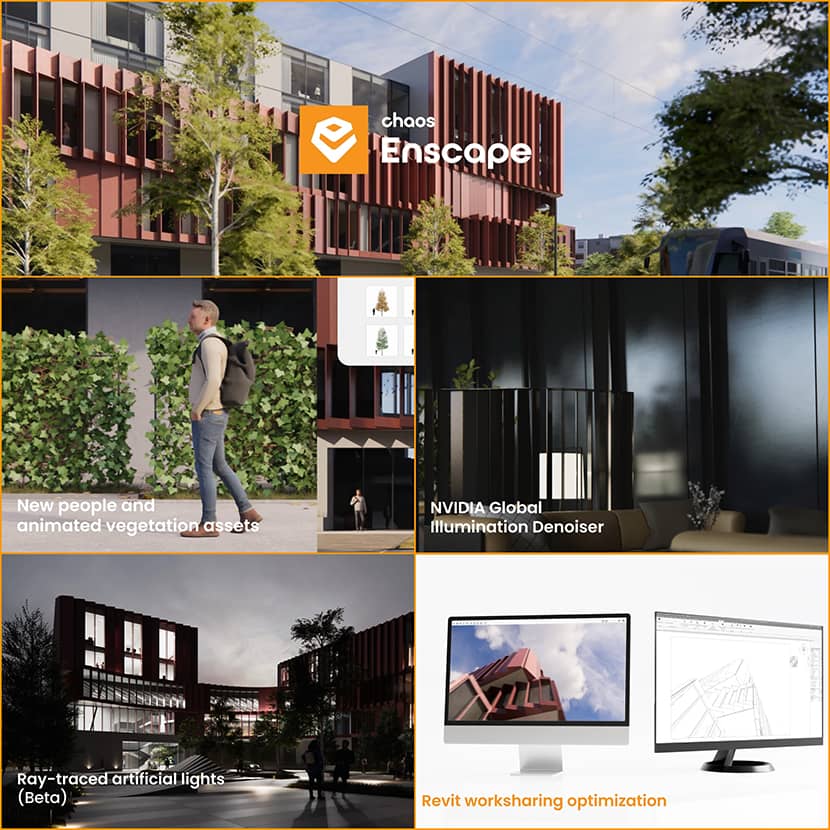
Marking a new era in rendering, Chaos releases Enscape 4.0. This version serves as a foundation for the future, featuring an overhauled codebase for improved performance and stability.
Enscape 4.0 delivers a wave of exciting features, including improved image quality in captures with NVIDIA Denoiser, support for the latest Rhino version (8.3 and above), a refreshed user interface, and early access to ray-traced artificial lights. Hardware ray tracing also gets a boost, with better reflections and global illumination. The update also expands VR headset compatibility and optimizes Revit Worksharing on Windows for a smoother collaborative experience.
For Mac users, Enscape 4.0 is a game-changer. It introduces a multi-platform solution, granting them access to the same powerful features previously enjoyed by Windows users. Mac users will now benefit from adjustable and dynamically placed assets, a custom asset library and editor, entire site context integration, BIM data access, and collaborative annotation tools.
In addition, Enscape 4.0 boasts a vastly expanded asset library with 178 new animated vegetation elements and 32 unique people figures. Compatibility with the latest VR headsets, including the Meta Quest 3 and HTC Vive Pro 2, enhances the immersive experience. The update features a more streamlined user interface and addresses pain points specifically encountered in collaborative workflows, especially for Revit users.
Enscape 4.0 prioritizes seamless integration within the Chaos ecosystem. The new V-Ray Scene Exporter allows users to effortlessly transfer crucial project data between Enscape and other design applications, such as V-Ray, 3ds Max, and Cinema 4D.
Watch the video presentation for the new Enscape 4.0 version:
Learn more about Enscape 4.0 on the Chaos website!
Chaos is a Bulgarian company established in Sofia in 1997 (famous for V-Ray). It is a world leader in visualization and computer graphics, creating technology that empowers artists and designers to visualize anything they can imagine. Their solutions vary from 3D rendering to real-time rendering and simulation software.
